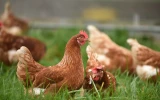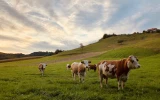13 Easiest Farm Animals for Beginners (Profit or Meat)
Starting out as a novice farmer will take courage and knowledge to be able to make farming a profitable business. You will need to know which farm animals are easiest to raise and which have good profit turnover. In this article, we’ll find out the most common farm animals beginners must consider raising to succeed in livestock farming.
The most accessible farm animals beginners may consider are pekin ducks, rabbits, chickens, quail, geese, guinea fowl, turkeys, sheep, goats, pigs, alpacas, cattle, and bees. Few of these farm animals are suitable for beginner farmers as their produce—either eggs, meat, or fibers—can gain them a high-profit return.
Now, let’s take a look at why these animals are easiest to raise among others in terms of the space they take up, the cost of raising them, and other variables to consider.
Summary
- Pekin ducks, chickens, geese, quail, guinea fowl, turkeys, sheep, goats, pigs, alpacas, cattle, rabbits, and bees are a few farm animals that beginner farmers may try starting with.
- Poultry birds are the easiest to start with in farming because they are relatively small and won't take up much space. They produce eggs and meat that can be sold for a high price.
- Bees, although rarely considered farm animals, are best for beginners because of their easy handling process, and because they can produce a steady supply of honey.
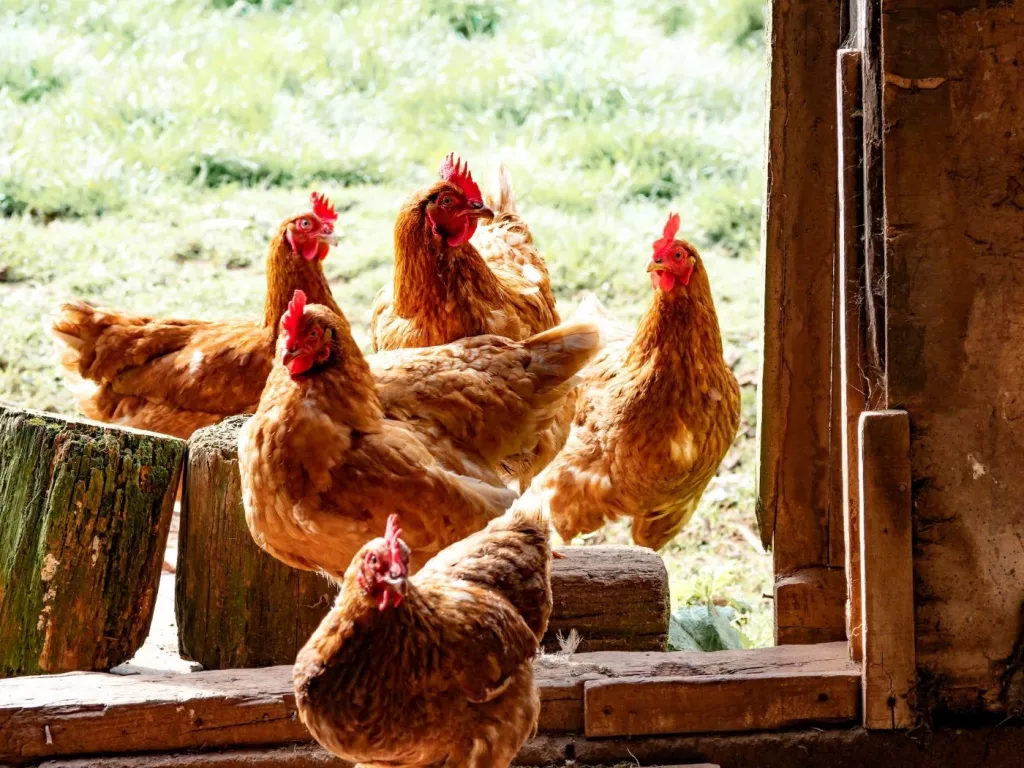
On this page:
Begin Farming With These Easy-to-Raise Farm Animals
If you plan to put up and raise your own farm animals, the best time to do it is now. You can raise them either for profit, or just to be sustainable. These farm animals can give you high earnings and provide a steady supply of food sources in the long run. Below is a list of the easiest animals to raise, even for beginners:
1. Pekin ducks are the easiest farm animals to raise.
| Variable | Rating |
|---|---|
| Space needed | 🟊🟊🟊🟊🟊 |
| Produce | 🟊🟊🟊🟊🟊 |
| Cost to raise | 🟊🟊🟊🟊🟊 |
| Consideration | Pekin ducks are prone to predators and require pond water for mating and hatching fertilized eggs |
| Overall | 🟊🟊🟊🟊🟊 |
Ducks only require little space – at least 2-3 square feet of floor area per duck. They need at least 6-12 hours of outdoor foraging. Nevertheless, they produce valuable meat and large eggs which can sell at $10-$15 per duck meat and $6-$12 per dozen of eggs.
If you’re a beginner, you can start by raising 12- 15 individual ducks. If you plan to raise ducks for eggs, you will need to provide them with a small pond because ducks need a body of water to mate and for fertilized eggs to hatch.
Since ducks are larger and slower than chickens, they are more prone to predators. This can be remedied by building them secured fencing- either welded or chain-linked- to deter predators.
2. Rabbits are very easy to care for in terms of feeding and spacing.
| Variable | Rating |
|---|---|
| Space needed | 🟊🟊🟊🟊🟊 |
| Produce | 🟊🟊🟊🟊🟊 |
| Cost to raise | 🟊🟊🟊🟊🟊 |
| Consideration | Rabbits are prone to predators, so they need hutches or protected bunny tractors. Rabbit meat is not yet widely accepted by some people as an alternative meat source. |
| Overall | 🟊🟊🟊🟊🟊 |
Rabbits take up very little space and require only 1.5 square feet per individual. They cost very little when it comes to feeding as they can easily be fed store-bought feed, hay/grass clippings, and even vegetable leftovers.
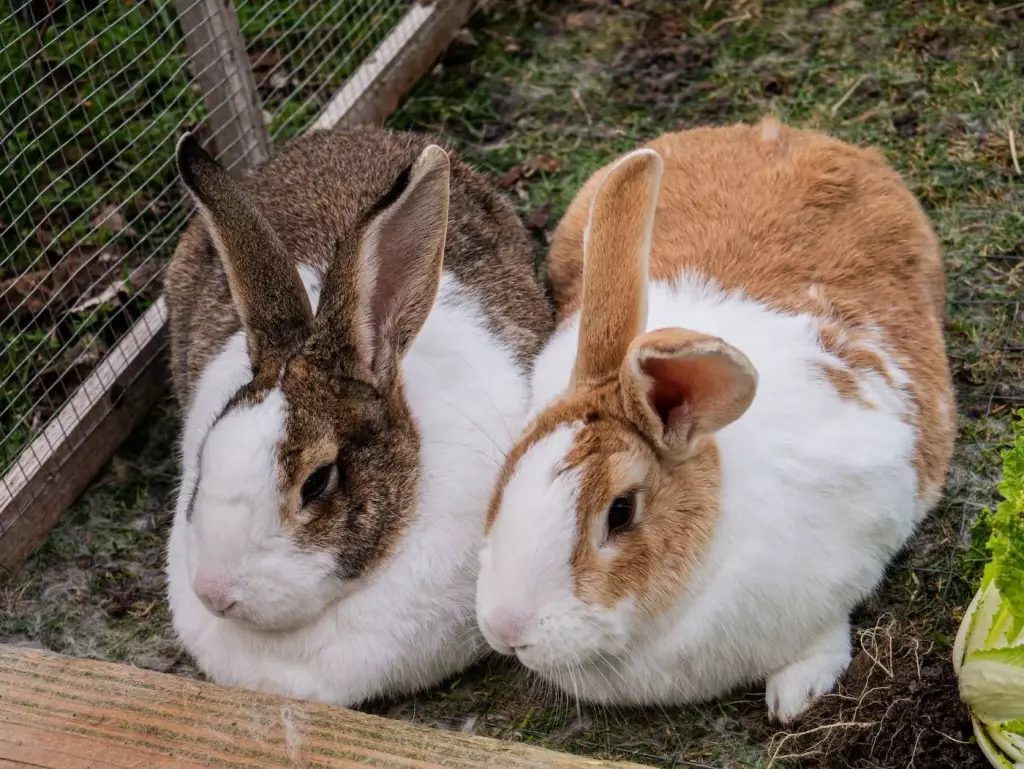
Rabbits can give birth to 6 bunnies and can be gleaned as early as 8 weeks for their meat. If you plan to raise rabbits for meat, their cages should be at least 3 square feet and 2 feet high. Rabbit meat is very lucrative and can be sold for around $40-50 per rabbit.
They also produce plenty of manure which can be sold to local gardeners. They also produce pelts which are popularly used for coats and hats, selling for up to $30 depending on breed and quality.
If you’re a beginner, you can start raising 3 or 4 female rabbits and 2 male rabbits to ensure profitability. Take note, however, that rabbits require hutches, but these can be built or bought at very little cost. You can also opt to let your rabbits to free range in a bunny tractor or raise them in a colony setting, whichever is cost-friendly.
3. Chickens are a good start-up for beginners in farming.
| Variable | Rating |
|---|---|
| Space needed | 🟊🟊🟊🟊🟊 |
| Produce | 🟊🟊🟊🟊🟊 |
| Cost to raise | 🟊🟊🟊🟊🟊 |
| Consideration | Chickens are prone to illness, demands frequent cleaning of coops, and their noisy crowing may not be welcomed by neighbors |
| Overall | 🟊🟊🟊🟊🟊 |
Raising chickens requires only about 4 square feet of space per hen in the coop and one nesting box for every 3 to 4 hens. Chickens are low-cost animals and will eat almost anything from compost, weeds, leftovers from the garden, or store-bought feed.
You can sell chickens for their eggs and meat, and the recommended number of chickens for beginners is at least 15-16 chickens to be able to get 8 dozen (96) eggs a week which can sell for around $800-$900 per year. Selling chicken meat costs around $5/lb.
Chickens can also be sold as day-old chicks, their manure as fertilizers, and even their feathers can be sold for crafts which can potentially earn an extra $80 a year.
One thing to consider with chickens is that they are prone to illness. Just one ill chicken may cause all others to fall ill too. This is why cleaning their coop must become a habit, as well as knowing the proper bedding to use to keep out lice and mites.
4. Quail is very profitable and easy to start with in farming.
| Variable | Rating |
|---|---|
| Space needed | 🟊🟊🟊🟊🟊 |
| Produce | 🟊🟊🟊🟊🟊 |
| Cost to raise | 🟊🟊🟊🟊🟊 |
| Consideration | Quails don’t have as much meat as chickens |
| Overall | 🟊🟊🟊🟊🟊 |
Quail are small species of poultry birds, so they don’t need as much space as chickens and ducks. They grow quickly and can be sold for meat and eggs. Species of Coturnix quail can lay in 6 weeks and are ready for meat processing at 9 weeks. A quail can lay approximately 200 eggs a year, and a dozen of their eggs can be sold for between $3-$5.
Quail costs between $1-$5. They only require smaller coops and consume less feed, which also lowers the expenses of raising them. The small size of the quail enables raising up to 500 individual birds, to equal the earnings from selling chicken meat and eggs.
5. Goats are magnificent and easy-to-handle farm animals for beginners.
| Variable | Rating |
|---|---|
| Space needed | 🟊🟊🟊🟊 |
| Produce | 🟊🟊🟊🟊🟊 |
| Cost to raise | 🟊🟊🟊🟊 |
| Consideration | Goats require high-tensile fencing and needs frequent deworming |
| Overall | 🟊🟊🟊🟊 |
Goats are a great addition to your farm as they are one of the easiest animals to take care of. They ranked 4th as the most consumed meat worldwide and are also a great source of dairy. If you want to maintain a dairy farm but have limited space, dwarf goats are the way to go, as they only require approximately 10-15 square feet of space.
Nigerian Dwarf goats can produce anywhere from ½ -1 gallon of milk per day, and each gallon of goat milk can sell for $12 or more. Their meat is priced from $13 to $18 per pound. Two goats alone can help you earn $1,000 and $2,000 per year.
Goats feed mostly on grains and shrubbery such as grasses, hay, bark, and weeds. They also love vegetables and store-bought food. But goats are skilled at escaping, so it is required that they have high-tensile fencing as they’re keen climbers. They are also susceptible to stomach issues and must be dewormed a few times a year.
6. Geese are remarkably easy to tend as farm animals.
| Variable | Rating |
|---|---|
| Space needed | 🟊🟊🟊🟊🟊 |
| Produce | 🟊🟊🟊🟊🟊 |
| Cost to raise | 🟊🟊🟊🟊🟊 |
| Consideration | Geese are not prolific egg-laying species |
| Overall | 🟊🟊🟊🟊🟊 |
Geese are thought to be easier to raise than chickens for various reasons. They only need quite a space of 6 to 8 square feet per bird. They can only lay between 2 – 10 eggs per year. Geese eggs can be sold for $2 per egg. Their meat is currently priced between $2.13 to $2.66 per kilogram or between $0.97 and $1.21 per pound.
Geese are casual grazers, so they prefer eating grass to eating bugs or other high-protein food. They are hardy animals and can withstand even the harshest blizzard. They can also excellently defend themselves from predators.
7. Sheep are low-maintenance livestock, so they are good for starters.
| Variable | Rating |
|---|---|
| Space needed | 🟊🟊🟊 |
| Produce | 🟊🟊🟊🟊🟊 |
| Cost to raise | 🟊🟊🟊🟊 |
| Consideration | Sheep require a fair amount of space; must select certain breeds suited to your climate to match the vegetation; prone to predators |
| Overall | 🟊🟊🟊🟊 |
Sheep are fairly low-maintenance farm animals but keeping them requires a bit of space to be profitable. You will also need to have knowledge of which breeds are suited to your agro-climatic conditions since that will affect vegetation.
You can keep at least 4 sheep per acre. A ewe produces an average of 2 – 4 young sheep, and each lamb can sell for $100. Their meat is usually sold for $380 for whole processed lamb.
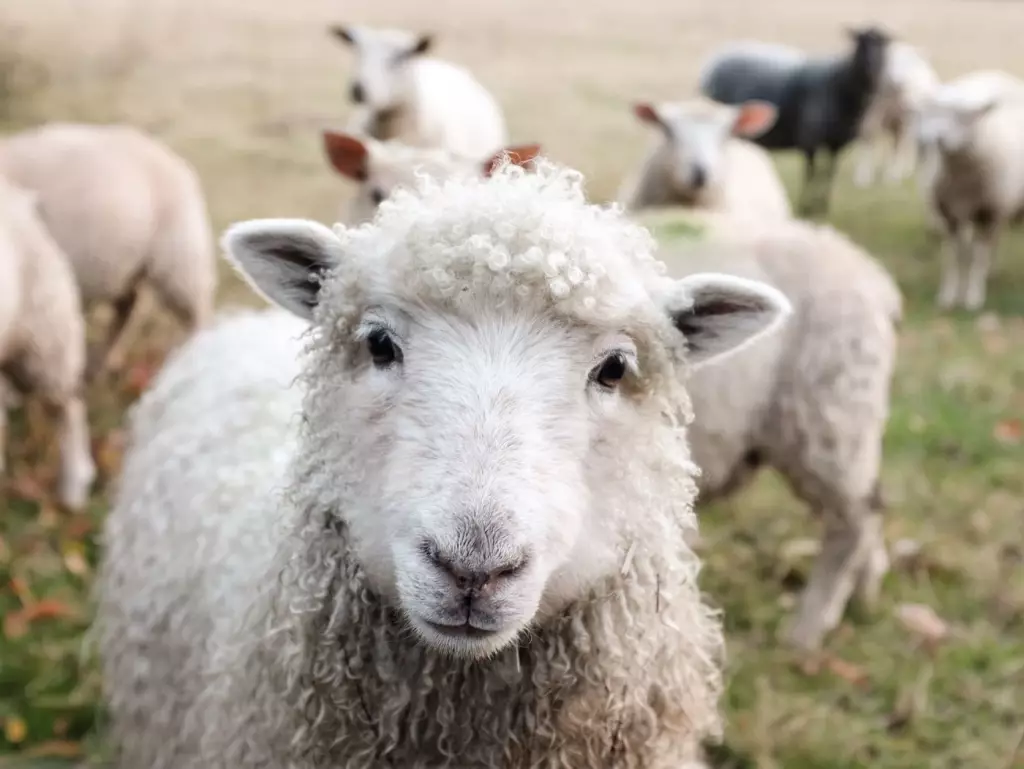
Sheep can also make great money if you sell their milk and wool. A sheep can produce between 2-30 pounds of wool every year, and a pound of wool can sell for $35 to $64.
Sheep are good lawnmowers and they're also not fussy with their food. They even eat grasses and weeds growing in poor soil. They cannot quite defend themselves well from predators so it’s best to build them sturdy fences.
8. Pigs are not fussy eaters so beginners may find them easy to raise.
| Variable | Rating |
|---|---|
| Space needed | 🟊🟊🟊 |
| Produce | 🟊🟊🟊🟊 |
| Cost to raise | 🟊🟊🟊 |
| Consideration | Pigs are quite dangerous and can be aggressive when not handled properly; requires a lot of feeding |
| Overall | 🟊🟊🟊 |
One pig is required to have at least 36 square feet of space. During the breeding season, a pig can be expected to give birth to 8- 10 piglets every 5 months. These piglets, however, must be raised for a year so they can gain an adequate amount of meat. They can then be sold for $100 each which means each year, you can expect a profit of $1,500 - $2,000 by selling a full litter.
Since pigs are not fussy feeders, they can eat compost, corn, grains, milk, bread, fodder, and even leftover human food. Since they are large animals, they will require lots of feeding and this can be expensive if they are not allowed to free-range.
Pigs are very strong animals, so they are required to have a pen with strong fencing. They can also be potentially dangerous and aggressive if they are unfamiliar with their handlers so beginner farmers must take safety precautions.
9. Raising bees is good for beginners.
| Variable | Rating |
|---|---|
| Space needed | 🟊🟊🟊🟊🟊 |
| Produce | 🟊🟊🟊 |
| Cost to raise | 🟊🟊🟊🟊 |
| Consideration | Bees can sting; initial investment for hive setup is costly |
| Overall | 🟊🟊🟊🟊 |
Although not usually considered livestock, bees are magnificent creatures that require little maintenance and are therefore easy to raise as farm animals.
You will only need hive boxes, to begin with, and a small source of water. You can set up at least 2 hives per acre of land to get a good amount of honey. You can get your bees for free during the swarming season in spring, but you must be careful and be well-suited if you plan to catch one.
Raising bees do have upfront costs, but the initial investment is worth the experience to have a good supply of honey that you can sell for $5 to $10 per pound. You may harvest 25 pounds of honey per hive on average, which means you can earn at least $125- $250 if you sell all of it.
10. Alpacas are one of the easiest animals to care for.
| Variable | Rating |
|---|---|
| Space needed | 🟊🟊🟊🟊 |
| Produce | 🟊🟊🟊 |
| Cost to raise | 🟊🟊🟊🟊 |
| Consideration | You need at least 3 alpacas to form a small herd and a space for them to graze and roam |
| Overall | 🟊🟊🟊🟊 |
Alpacas have minimal requirements for food, cleanup, and care. They need the same amount of space as sheep. They are social animals, and a good herd will have to consist of at least six animals, but a requirement of at least three alpacas is needed for them to feel safe and socialize.
They will also need plenty of space for roaming and grazing to prevent stress and fighting, and proper shelter and fencing that will protect them from predators. If you plan to keep both male and female, they must have separate spaces.
Initial purchase costs of alpacas are expensive and may range from $1,000- $2,000 for female alpacas. But it is worth it because alpacas produce 10 pounds of raw fleece, which is highly valued in the clothing industry more than sheep wool.
Raw fleece can be sold for $3 per ounce and can get you to earn $500 from just the raw fiber alone. Selling fiber, however, requires that you check zoning regulations and laws in your area.
Alpacas can’t be sold for their meat, but you can sell their offspring. A healthy female alpaca can even sell for between $10,000 and $20,000.
11. Turkeys are relatively easy to take care of and are good for beginners.
| Variable | Rating |
|---|---|
| Space needed | 🟊🟊🟊🟊 |
| Produce | 🟊🟊🟊🟊🟊 |
| Cost to raise | 🟊🟊🟊🟊 |
| Consideration | Turkeys require high fencing and needs protein-rich food |
| Overall | 🟊🟊🟊🟊 |
Turkeys are easy to keep, particularly if they are allowed to free-range. Young turkeys need 2.5 square feet each in the brooder space and 10 square feet each in the grow-out pen. Turkeys that are placed on grass need 25×25 square feet of space each.
The demand for turkey meat peaks during the holiday season. Turkey meat has been affected by inflation and now sells at $1.99 per pound. A whole frozen turkey weighs around 18 to 20 pounds.
Aside from their meat, turkey eggs can be sold too at prices of around $2.50 to $4 an egg. It’s also possible to sell turkeys as live birds, yielding you somewhere between $3 and $15, depending on the age of the bird.
Since turkeys are large creatures, their fencing needs to be as high as possible. Turkey birds need more protein in their food for the first few weeks than other domestic birds. The protein in turkey feed should be at least 28 percent.
12. Cattle are some of the best animals to raise with ease.
| Variable | Rating |
|---|---|
| Space needed | 🟊🟊 |
| Produce | 🟊🟊🟊🟊🟊 |
| Cost to raise | 🟊🟊🟊 |
| Consideration | Cattle can be dangerous when mishandled; needs at least 10 acre of land |
| Overall | 🟊🟊🟊 |
Even though they are big, cattle are generally easy to raise, though they can be very dangerous if you do not know how to handle them. Cattle are also quite low maintenance. There are also smaller breeds like the Dexter cow which you can opt for and only requires half an acre of good quality pasture to graze on.
Cattle need good quality pasture and hay during winter, a water source, a barn for winter, and shade for summer. They also require more space such as 10-acre land or bigger that will offer them enough space for grazing.
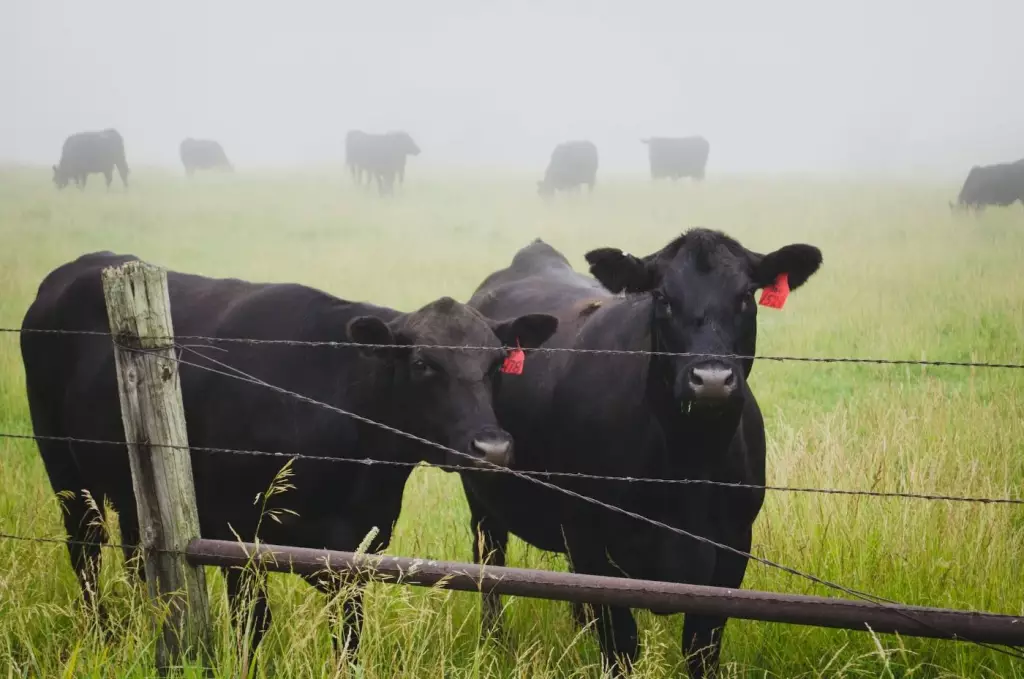
Since they can be quite dangerous, high-tensile fencing is needed. To be able to generate a steady income, you will need a herd of about 150 cows, which can give you a profit between $100 to $125 per cow.
Beef cattle meat sells for around $5 to $10 per pound, and if you plan to raise cows for a full fairy farm, you can sell their milk and milk by-products.
13. Guinea fowls are relatively easy to keep.
| Variable | Rating |
|---|---|
| Space needed | 🟊🟊🟊🟊🟊 |
| Produce | 🟊🟊🟊🟊🟊 |
| Cost to raise | 🟊🟊🟊🟊🟊 |
| Consideration | Guinea fowl tend to be wild and flighty |
| Overall | 🟊🟊🟊🟊🟊 |
Guinea fowl requires at least 2 to 3 square feet per bird. The more room there is, the less stressful it will be for these birds. A guinea hen usually lays 90 – 130 eggs per season. Their eggs are much smaller than chicken eggs but are deeply flavored, with large golden yolks and surprisingly tough shells.
Guinea fowl are often kept for their meat, which is regarded as a delicacy. To date, guinea fowl meat is sold between $1.44 to $1.47 per kilogram or $0.65 to $0.67 per pound.
Free-range guinea fowl will find much of their own food, so it could cost you less in feeding them. They will need extra food supply however during the winter season. They have the same food preference as chickens and turkeys, but they particularly enjoy eating corn. A container of fresh water is another requirement for these animals.
Guineas are relatively hardy animals and are less prone to illnesses than chickens. The problem with them is they are very flighty and prefers sitting atop trees. The only time to catch them is during the night when they’re back home.
